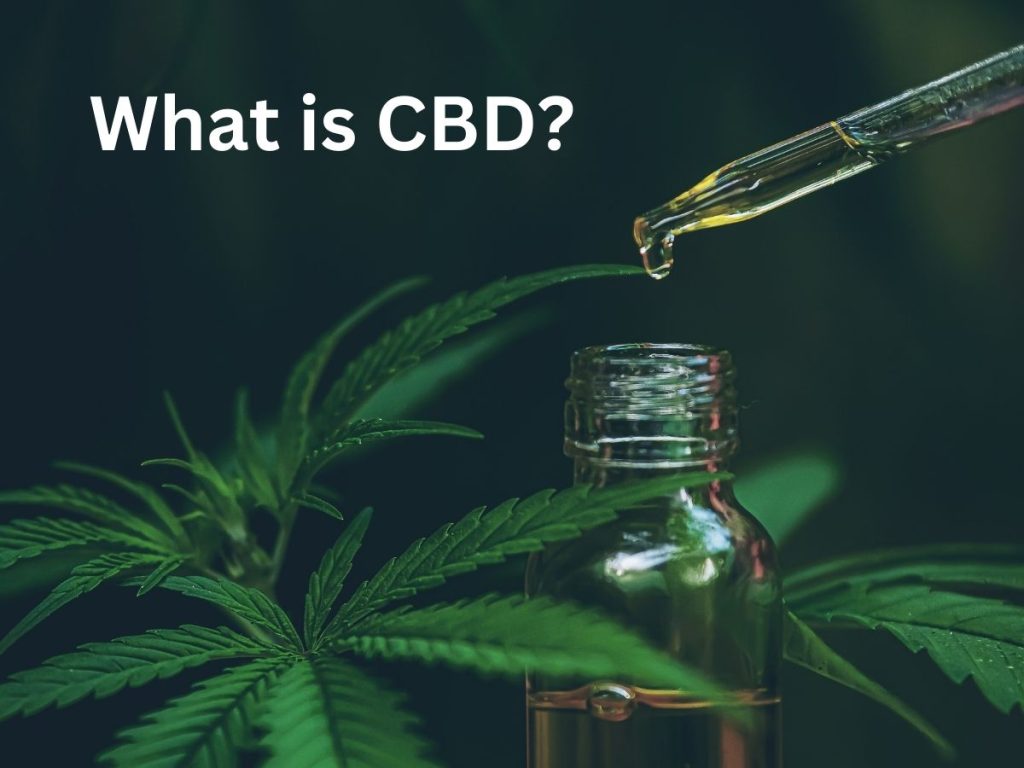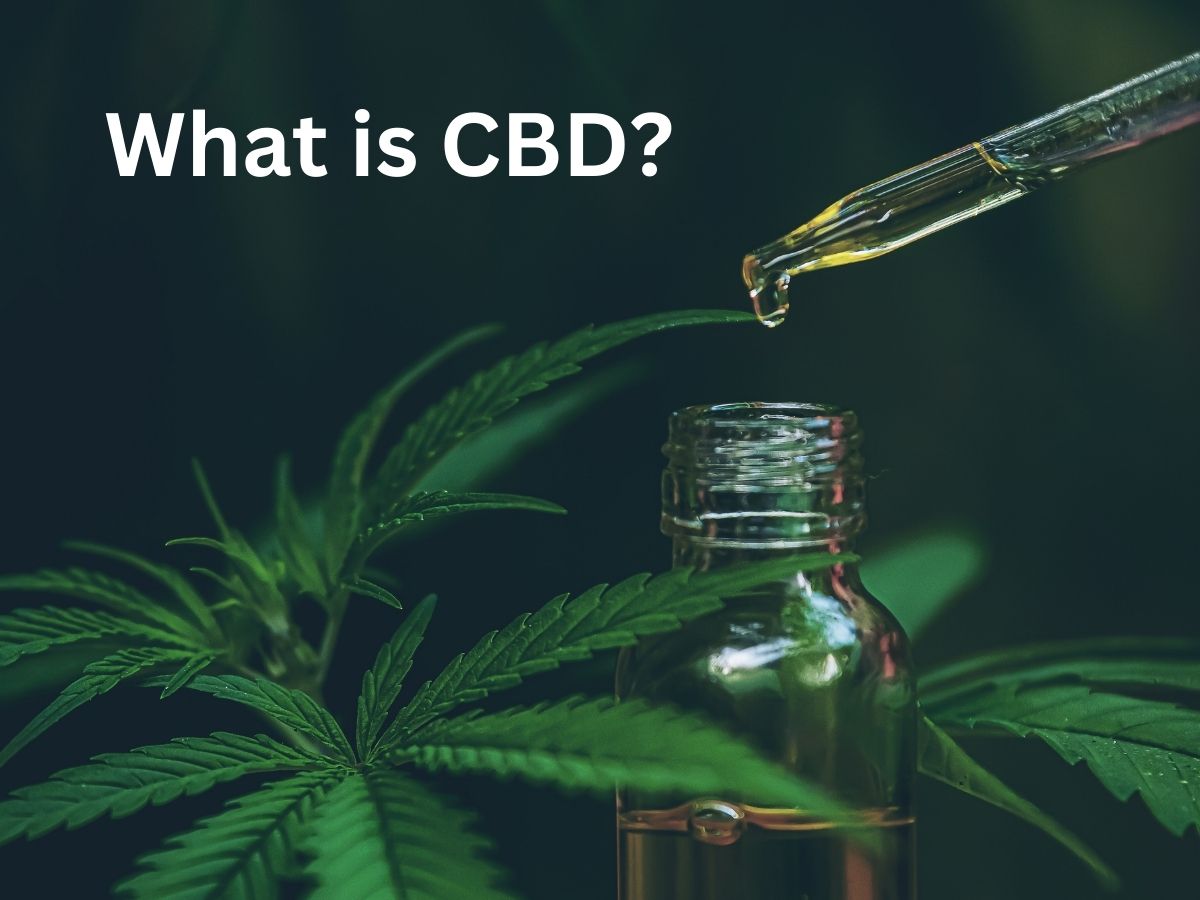In recent years, CBD has become a buzzword in the health and wellness industry. But what exactly is CBD, and why has it gained so much attention? This comprehensive guide aims to demystify CBD for beginners, providing you with a solid foundation of knowledge about this fascinating compound.
Table of Contents
What is CBD?
CBD, short for cannabidiol, is one of over 100 naturally occurring compounds found in the Cannabis sativa plant, known as cannabinoids. Unlike its more famous cousin, THC (tetrahydrocannabinol), CBD is non-psychoactive, meaning it doesn’t produce the “high” associated with marijuana use.
CBD is typically extracted from hemp, a variety of cannabis that contains less than 0.3% THC by dry weight. This low THC content is what makes hemp-derived CBD legal in many parts of the world, including most of the United States.

The Endocannabinoid System
To understand how CBD works, it’s essential to know about the endocannabinoid system (ECS). The ECS is a complex cell-signaling system discovered in the early 1990s. It plays a crucial role in regulating various bodily functions, including:
- Mood
- Sleep
- Appetite
- Memory
- Reproduction and fertility
- Pain sensation
- Immune response
The ECS consists of three main components:
- Endocannabinoids: Molecules produced naturally by your body
- Cannabinoid receptors: Found throughout your body, endocannabinoids bind to these to signal that the ECS needs to take action
- Enzymes: These break down endocannabinoids once they’ve carried out their function
How CBD Works in the Body
Unlike THC, which binds directly to cannabinoid receptors, CBD interacts with the ECS in a more indirect manner. Research suggests that CBD:
- Inhibits the enzyme that breaks down anandamide, a key endocannabinoid, potentially prolonging its effects
- Activates or inhibits other receptors, such as serotonin receptors, which may contribute to its potential anti-anxiety and anti-depressant effects
- Modulates various ion channels, which could explain its potential pain-relieving properties
These complex interactions are still being studied, but they help explain why CBD may have such a wide range of potential therapeutic applications.
Types of CBD Products
CBD is available in various forms, each with its own advantages and considerations:
- CBD Oil: One of the most popular forms, typically taken sublingually (under the tongue) for faster absorption.
- CBD Capsules: Convenient for precise dosing and easy to incorporate into daily routines.
- CBD Edibles: Includes gummies, chocolates, and other food products infused with CBD.
- CBD Topicals: Creams, lotions, and balms applied directly to the skin for localized effects.
- CBD Vapes: Offers rapid absorption through inhalation but comes with potential respiratory risks.
- CBD Drinks: Beverages infused with CBD, offering a refreshing way to consume CBD.
- CBD Isolate: Pure CBD in crystalline form, which can be added to other products or consumed directly.
Full-Spectrum vs. Broad-Spectrum vs. CBD Isolate
When shopping for CBD products, you’ll often encounter these terms:
- Full-Spectrum CBD: Contains all naturally occurring compounds from the cannabis plant, including trace amounts of THC (≤0.3%). May produce the “entourage effect,” where multiple cannabinoids work synergistically.
- Broad-Spectrum CBD: Similar to full-spectrum but with THC removed. Still contains other cannabinoids and terpenes.
- CBD Isolate: Pure CBD, with all other compounds removed. Typically 99%+ pure CBD.
Each type has its pros and cons, and the choice often depends on personal preference and specific needs.
Potential Benefits of CBD
While research is ongoing, CBD has shown promise in several areas:
- Pain Management: CBD may help alleviate chronic pain by impacting endocannabinoid receptor activity and interacting with neurotransmitters [1].
- Anxiety and Depression: Some studies suggest CBD may have anxiolytic (anti-anxiety) and antidepressant effects [2].
- Sleep Disorders: CBD might improve sleep quality and duration for some individuals [3].
- Neuroprotective Properties: Research indicates CBD may have neuroprotective qualities, potentially beneficial for neurological disorders [4].
- Anti-inflammatory Effects: CBD has shown anti-inflammatory properties, which could be beneficial for various conditions [5].
- Epilepsy: The FDA has approved a CBD-based medication, Epidiolex, for treating certain forms of epilepsy [6].
It’s important to note that while these potential benefits are promising, more research is needed to fully understand CBD’s effects and optimal use cases.
Side Effects and Safety Considerations
While CBD is generally well-tolerated, it can cause side effects in some people. These may include:
- Dry mouth
- Diarrhea
- Reduced appetite
- Drowsiness and fatigue
- Changes in weight
CBD can also interact with certain medications, particularly those with a “grapefruit warning.” Always consult with a healthcare professional before starting CBD, especially if you’re taking other medications.
Legal Status of CBD
The legal status of CBD can be complex and varies by country and even by state within the United States. In the U.S., hemp-derived CBD (containing ≤0.3% THC) was federally legalized under the 2018 Farm Bill. However, individual states may have their own regulations.
It’s crucial to research and understand the laws in your specific location before purchasing or using CBD products. For more information on CBD legality, visit our CBD Legal Issues page.
How to Choose and Use CBD Products
When selecting CBD products:
- Check for Third-Party Testing: Reputable companies provide Certificates of Analysis (COAs) from independent labs. These verify the product’s CBD content and check for contaminants.
- Consider the Extraction Method: CO2 extraction is considered the gold standard for producing high-quality CBD oil.
- Read Labels Carefully: Look for clear information about CBD content, other ingredients, and usage instructions.
- Start Low and Go Slow: Begin with a low dose and gradually increase until you achieve the desired effects.
- Choose the Right Product Type: Consider your needs and preferences when selecting between oils, capsules, topicals, etc.
For more detailed information on CBD products, visit our CBD Products category page.
CBD Dosage Guidelines
There’s no one-size-fits-all dosage for CBD. The optimal amount depends on factors such as:
- Body weight
- Individual body chemistry
- The condition being treated
- The concentration of CBD in the product
A general rule of thumb is to start with 1-6 mg of CBD per 10 pounds of body weight. However, it’s best to consult with a healthcare professional for personalized advice.
For more information on dosing, check out our CBD Calculator and Dosage pages.
CBD and Drug Interactions
CBD can interact with various medications by affecting the activity of cytochrome P450, a family of enzymes responsible for metabolizing many drugs. This can potentially increase or decrease the effectiveness of these medications.
Medications that may interact with CBD include:
- Antidepressants
- Antibiotics
- Antihistamines
- Antipsychotics
- Blood thinners
- Some heart medications
Always consult your healthcare provider before using CBD alongside other medications.
Frequently Asked Questions
Will CBD get me high?
No, CBD is non-psychoactive and won’t produce a “high” like THC.
Is CBD addictive?
Current evidence suggests that CBD is not addictive and may even have potential in treating substance use disorders.
Can I take too much CBD?
While CBD is generally well-tolerated, taking too much may increase the risk of side effects. Always follow recommended dosages.
Will CBD show up on a drug test?
Most standard drug tests look for THC, not CBD. However, some CBD products contain trace amounts of THC, which could potentially result in a positive test. If you’re concerned, opt for CBD isolate products or consult with the testing facility.
How long does it take for CBD to work?
The onset time varies depending on the method of consumption. Inhalation and sublingual use typically produce faster effects (15-30 minutes) compared to oral ingestion (1-2 hours).
For more answers to common questions, visit our CBD Basics category page.
Conclusion
CBD offers an exciting frontier in natural health and wellness. As research continues to unfold, we’re learning more about its potential benefits and optimal uses. Whether you’re considering CBD for a specific health concern or general wellness, it’s crucial to approach it with an informed perspective.
Remember to consult with healthcare professionals, especially if you have existing health conditions or are taking medications. Stay informed about the latest research and regulations surrounding CBD, and always purchase from reputable sources that provide third-party lab testing results.
As you embark on your CBD journey, we encourage you to explore the wealth of information available on our site, from detailed articles on CBD and Health to our comprehensive CBD Glossary. Knowledge is power when it comes to making informed decisions about your health and wellness.
References:
[1]: Darkovska-Serafimovska, M., Serafimovska, T., Arsova-Sarafinovska, Z., Stefanoski, S., Keskovski, Z., & Balkanov, T. (2018). Pharmacotherapeutic considerations for use of cannabinoids to relieve pain in patients with malignant diseases. Journal of Pain Research, 11, 837-842.
https://doi.org/10.2147/JPR.S160556
[2]: Blessing, E. M., Steenkamp, M. M., Manzanares, J., & Marmar, C. R. (2015). Cannabidiol as a Potential Treatment for Anxiety Disorders. Neurotherapeutics, 12(4), 825-836.
https://doi.org/10.1007/s13311-015-0387-1
[3]: Babson, K. A., Sottile, J., & Morabito, D. (2017). Cannabis, Cannabinoids, and Sleep: a Review of the Literature. Current Psychiatry Reports, 19(4), 23. https://doi.org/10.1007/s11920-017-0775-9
[4]: Campos, A. C., Fogaça, M. V., Sonego, A. B., & Guimarães, F. S. (2016). Cannabidiol, neuroprotection and neuropsychiatric disorders. Pharmacological Research, 112, 119-127.
https://doi.org/10.1016/j.phrs.2016.01.033
[5]: Burstein, S. (2015). Cannabidiol (CBD) and its analogs: a review of their effects on inflammation. Bioorganic & Medicinal Chemistry, 23(7), 1377-1385. https://doi.org/10.1016/j.bmc.2015.01.059
[6]: U.S. Food and Drug Administration. (2018). FDA approves first drug comprised of an active ingredient derived from marijuana to treat rare, severe forms of epilepsy.
https://www.fda.gov/news-events/press-announcements/fda-approves-first-drug-comprised-active-ingredient-derived-marijuana-treat-rare-severe-forms

